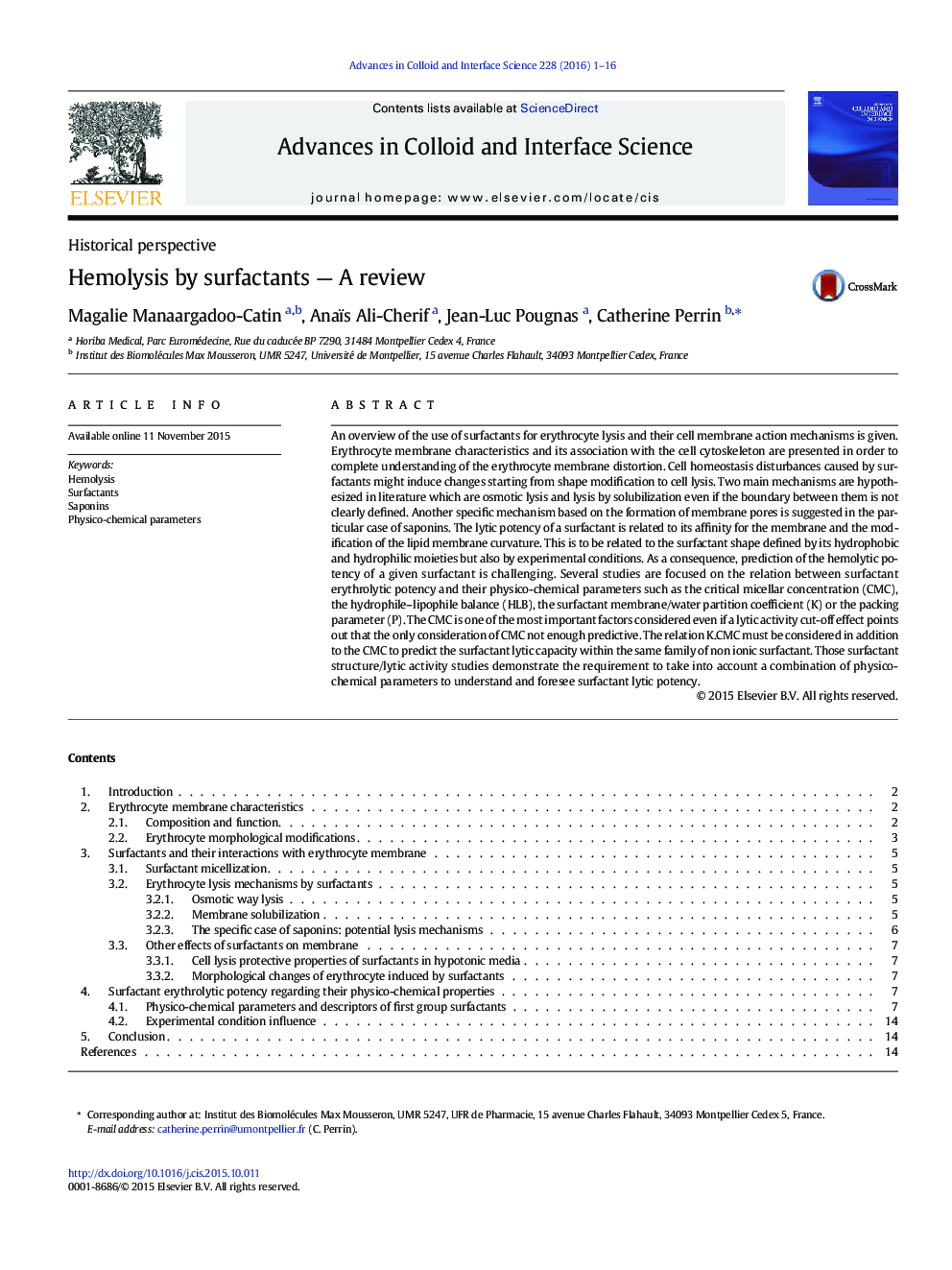| Article ID | Journal | Published Year | Pages | File Type |
|---|---|---|---|---|
| 590610 | Advances in Colloid and Interface Science | 2016 | 16 Pages |
•Surfactants for erythrocyte lysis•Surfactant cell membrane action mechanisms•Combination of several physicochemical parameters is necessary to predict lytic activity.
An overview of the use of surfactants for erythrocyte lysis and their cell membrane action mechanisms is given. Erythrocyte membrane characteristics and its association with the cell cytoskeleton are presented in order to complete understanding of the erythrocyte membrane distortion. Cell homeostasis disturbances caused by surfactants might induce changes starting from shape modification to cell lysis. Two main mechanisms are hypothesized in literature which are osmotic lysis and lysis by solubilization even if the boundary between them is not clearly defined. Another specific mechanism based on the formation of membrane pores is suggested in the particular case of saponins. The lytic potency of a surfactant is related to its affinity for the membrane and the modification of the lipid membrane curvature. This is to be related to the surfactant shape defined by its hydrophobic and hydrophilic moieties but also by experimental conditions. As a consequence, prediction of the hemolytic potency of a given surfactant is challenging. Several studies are focused on the relation between surfactant erythrolytic potency and their physico-chemical parameters such as the critical micellar concentration (CMC), the hydrophile–lipophile balance (HLB), the surfactant membrane/water partition coefficient (K) or the packing parameter (P). The CMC is one of the most important factors considered even if a lytic activity cut-off effect points out that the only consideration of CMC not enough predictive. The relation K.CMC must be considered in addition to the CMC to predict the surfactant lytic capacity within the same family of non ionic surfactant. Those surfactant structure/lytic activity studies demonstrate the requirement to take into account a combination of physico-chemical parameters to understand and foresee surfactant lytic potency.
Graphical abstractFigure optionsDownload full-size imageDownload as PowerPoint slide
